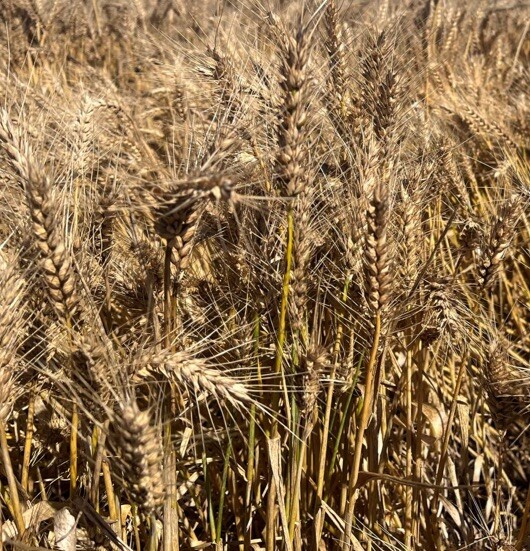Retaining weather damaged seed
With grain quality issues at the forefront of members’ minds, securing planting quality sowing seed will be a priority as harvest gets underway. Ensure you are only keeping high quality seed for next season.

Key messages
- Retained seed quality is affected by harvest, storage, handling and sowing processes
- Weather-damaged grain is more susceptible to lower germination, vigour and degradation
- Harvest your cleanest, driest crops for seed first
- Seed testing from harvest onwards will identify potential seed quality issues
With grain quality issues at the forefront of members’ minds, securing planting quality sowing seed will be a priority as harvest gets underway.
Wet harvests can cause seed crops to deteriorate in quality – but the extent will depend on the amount of rain received, how quickly they dry out and how grain is handled and stored after harvest.
Wet weather and sprouting – how it affects seed quality
One of the issues is that wet weather before and during harvest can kick-start the germination process (sprouting), which causes photosynthates (i.e., starch) to be digested.
Signs include discolouration and a loose/wrinkled seed coat, especially in pulses (caused by swelling and shrinking), while significant rain may cause the seed to swell and split the skin over the growing point. Provided the seed dries out before the embryo starts to grow, the seed could still be viable for sowing.
By this stage however, a lot of the seed’s energy store will have been used, reducing its ability to complete the germination process. Seeds will often be lighter and seedling vigour may be reduced (for this reason, weather-damaged seed needs to be sown at correct sowing depths and using good agronomic practices).
Sprouted seed is also more susceptible to fungal infection and physical damage by handling.
Seed quality and seedling establishment
Seed size plays a key role in crop establishment; larger, plump seeds produce more vigorous seedlings with improved crop establishment rates, particularly if sown at depth (due to their longer and stronger coleoptile).
This is especially important for canola which, due to its small size, shouldn’t be retained if poor quality (hybrid canola seed should never be retained). If necessary, consider grading and retaining large seed.
Choose seed from high fertility paddocks to ensure it hasn’t been limited by nutrients (i.e. phosphorus deficient crops can produce up to 50 % abnormal seedlings).
Consider also that windrowing too early can result in unripe seeds with reduced germination and that desiccation/crop-topping could also affect seed quality (grain mustn’t be retained for seed when glyphosate has been applied pre-harvest).
The germination process causes an increase in alpha-amylase, an enzyme that breaks down starch; the longer the grain sprouts, the more alpha-amylase is formed (this is measured indirectly using the falling number test, with a linear relationship between a reduction in falling number and declining germination percentage).
Conditions that favour sprouting are also good for fungal growth. Usually, black mould on the grain surface does not impact quality, however monitor for whitish or pinkish pathogens.
Seed test, seed test, seed test
Weather-damaged seed should always be germination and vigour tested before sowing, even without visual signs of sprouting (sugars begin to be converted before there are visible signs).
Harvest and storage
When weather damage is likely, prioritise the harvesting of retained seed at a low moisture content and cool temperatures. To avoid damaging grain (damaged seeds will deteriorate rapidly), take care with harvester settings and handling.
Because weather-affected seed is more susceptible to degradation during storage, keep grain at 20˚C or less (increasing temperature from 20˚C to 30˚C results in a 50 % reduction of germination over four months) and use aeration where possible. Weather-damaged seed shouldn’t be stored for more than 12 months.
Disease
Disease has been problematic this year, especially in pulses. This may lead to possible reductions in grain size and greater grain size variations, as well as lower seedling vigour and smaller seedling root systems.
Consider also that diseases can also be carried over from year to year on retained seed, potentially spreading disease to other parts of the farm (i.e chocolate spot and Ascochyta Blight).
To minimise disease spread, always aim to use the cleanest seed possible, preferably with zero seed infection, and treat all seed with a seed dressing registered for seed-borne diseases.
Consider how standard biosecurity practices (i.e cleaning machinery between paddocks) can improve your seed management processes (learn more from our Biosecurity article).
Sources & further reading
Author
NEWS
Keep up to date with the latest news from across the Riverine Plains.
-
Livestock
-
People
-
Grains
-
Sustainability

